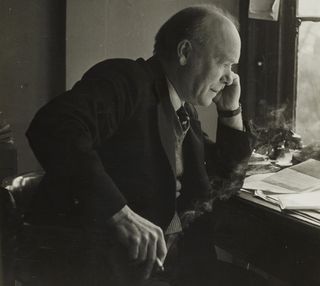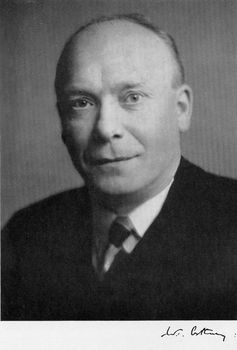
Watson and Crick Took All the Glory, but There’s a Forgotten Hero of the Double Helix

This article was originally published at The Conversation. The publication contributed the article to Live Science's Expert Voices: Op-Ed & Insights.
In the world of sport, we remember a winner. Not many people have heard of Pierre Rolland, who finished eighth in the 2012 Tour de France. But everyone knows Bradley Wiggins, who won it. The history of science is often also described in similar terms – as a tale of winners and losers racing to the finish line. Nowhere is this truer than in the story of the discovery of the structure of DNA.
When James Watson’s book, The Double Helix, was published in 1968, it depicted science as a frantic and often ruthless race in which the winner took all. In Watson’s account, it was he and his Cambridge colleague Francis Crick who were first to cross the finish line, with their competitors Rosalind Franklin at Kings College London and Linus Pauling at California Institute of Technology trailing behind.
There is no denying the importance of Watson and Crick’s achievement: their double-helical model of DNA not only answered fundamental questions in biology, such as how organisms pass on hereditary traits from one generation to the next, but also heralded the advent of genetic engineering and the production of vital new medicines such as recombinant insulin.
But it is worth asking whether this portrayal of science as a breathless race to the finish line with only winners and losers is necessarily an accurate one. And perhaps more importantly, does it actually obscure the way that science really works?
Watson and Crick obtained a vital clue to solving the double-helix thanks to a photograph taken by the crystallographer Rosalind Franklin. Labelled in her lab notes as Photo 51, it showed a pattern of black spots arranged in the shape of a cross, formed when X-rays were diffracted by fibres of DNA. The effect of this image on Watson was dramatic. The sight of the black cross, he later said, made his jaw drop and pulse race for he knew that this pattern could only arise from a molecule that was helical in shape.
In recognition of its importance in the discovery of the double-helical structure of DNA, a plaque on the wall outside King’s College London, where Franklin worked, now hails Photo 51 as being “one of the world’s most important photographs”.
Sign up for the Live Science daily newsletter now
Get the world’s most fascinating discoveries delivered straight to your inbox.
Yet, curiously, Franklin had not been the first to observe this striking cross pattern. Almost a year earlier, the physicist William Astbury working in his lab at the University of Leeds had obtained an almost identical X-ray diffraction pattern of DNA.

Despite obtaining this clue that would prove to be so vital to Watson and Crick, Astbury never solved the double-helical structure himself and while the Cambridge duo went to win the Nobel Prize for their work, Astbury remains largely forgotten.
To dismiss him in this way, however, is not only both hasty and short-sighted, but also a gross misjudgement of his real contribution to science. For his true scientific legacy extended much further than merely pioneering the methods that would eventually be used to solve the structure of DNA.
While Watson and Crick’s attention was focused solely on DNA, Astbury made X-ray studies of a wide range of compounds found in diverse biological fibres from wool and muscle to bacterial flagella. The unifying idea underlying this apparently eclectic range of subject materials was Astbury’s conviction that living systems could be best understood in terms of the shape of the giant chain molecules from which they were made. Popularised by Astbury as the new science of “molecular biology”, this novel approach has had a powerful impact on modern medicine for it lies at the heart of our understanding of diseases such as sickle-cell anaemia and Alzheimer’s disease.
Astbury’s legacy went even further still. Molecular biology has enabled us not only to understand living systems in terms of molecular shape but also to deliberately alter the molecular structure of biological materials for practical purposes. By manipulating the structure of DNA, scientists working at Genentech, one of the first fledgling biotechnology companies founded on the West Coast of the US in the 1970s, were able to make bacteria that could synthesise the human form of the hormone insulin which regulates blood sugar levels and is vital in the treatment of type-1 diabetes.
The success of synthesising insulin is not down to Crick and Watson alone. The scientists at Genentech used a particular kind of bacterial enzyme called a “restriction enzyme” to excise sections of human DNA and physically join them with bacterial DNA. But it could well be argued that this approach of altering biological materials at the molecular level had an alternative origin – one that was situated not under the sunny blue skies of 1970s California but the rather more rainy, leaden skies of inter-war Leeds in the UK.
It was in Leeds that Astbury working in collaboration with London-based colleagues showed that the shape of the molecular chains of proteins taken from the monkey-nut plant’s seeds could be modified by chemical treatment into different fibrous form. The chemical modification involved changing the shape of the molecule, rather than adding or removing something from it, which was how most chemists looked at molecules then. This form of modification became the basis of molecular biology and has been used to solve many practical problems.
With high hopes that such a fibre might well offer a cheap alternative to wool and so be the salvation of the British textile industry, the British company ICI sent Astbury an entire overcoat spun from re-shaped monkey-nut proteins. Even though the fibre didn’t live up to the high hopes ICI had, the field of molecular biology has contributed to many other innovations since. Astbury continued wearing this unusual garment to his lectures as a visual symbol of the idea that life can be understood in terms of molecular shape and that we can actively alter these shapes for our own ends.
Kersten Hall is the author of The Man in the Monkeynut Coat: William Astbury and the Forgotten Road to the Double-Helix, published in 2014 by Oxford University Press.
This article was originally published on The Conversation. Read the original article. Follow all of the Expert Voices issues and debates — and become part of the discussion — on Facebook, Twitter and Google +. The views expressed are those of the author and do not necessarily reflect the views of the publisher. This version of the article was originally published on Live Science.
Most Popular


